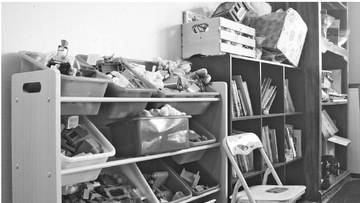Be prepared before flood season hits the state
As winter melts away to spring, it also marks a return to flood season. Flooding from melting snow or heavy rain is one of the most common, and most costly, natural hazards in Wisconsin.
To encourage everyone in the state to be prepared, Feb. 28 through March 4, has been proclaimed as Flood Safety Awareness Week in Wisconsin. ReadyWisconsin and the Department of Health Services, asks everyone in the state, to assess their flood risk and learn how to protect themselves before, during and after a flood.
“Floodwaters can rise in a matter of seconds, creating a potentially life-threatening situation,” said Greg Engle, acting Wisconsin Emergency Management administrator. “People often underestimate the force and power of water.” Since 2010, more than a dozen people in the state, lost their lives during flooding. The more people heed warnings and avoid flooded areas, the more lives can be saved.
While the waters can’t always be stopped from rising, the following tips can help improve safety for a community before a flood:
• Know the flood risk. Assess the potential for flooding on property if it is in a flood plain or near a body of water, or the property has a basement. Plan for what the family will do if the floodwaters begin to rise.
• Build a “Go Kit.” Include items such as food, water, cash, medications and copies of important documents (personal identification like passports and birth certificates, medical records, insurance policies and financial documents).
• Make an emergency plan if the family needs to leave quickly, identify a meeting place for each family member. Make a list of emergency numbers and important contacts.
• Keep water out of the house. Clean gutters regularly, direct downspouts away from the foundation, repair cracks in the foundation, improve grading so water flows away from the house and cover window wells.
• Investigate flood insurance. Standard insurance policies generally do not cover flooding. Most flood coverage requires 30 days to take effect.
• Move valuables out of the basement. Store important records and documents in waterproof containers on upper levels of the home.
The following tips should be used during and after a flood:
• Stay up-to-date on the forecast. Identify multiple ways to receive alerts about dangerous weather conditions and potential flooding, such as a NOAA Weather Radio, trusted local news outlets and mobile weather apps.
• Never drive or walk through flooded areas – turn around, don’t drown. Just six inches of fast-moving water can sweep adults off their feet, while 12 inches can carry away a small car. Be especially careful while driving at night.
• Take steps to protect health, by staying out of floodwaters, which can contain bacteria from human and animal waste, sharp objects, hazardous chemicals, downed power lines and other dangerous items.
• If a home floods, follow cleaning and disinfection guidelines to avoid mold growth.
• If the power goes out for more than four hours, throw out refrigerated food or any food that came into contact with floodwater.
• If drinking water well is flooded, disinfect the well and test the water to make sure it’s safe before drinking it.
• If using a generator, keep it outside at least 20 feet from the home to avoid illness or death from carbon monoxide, which can occur in enclosed spaces.
For more information, visit readywisconsin.wi.gov.


